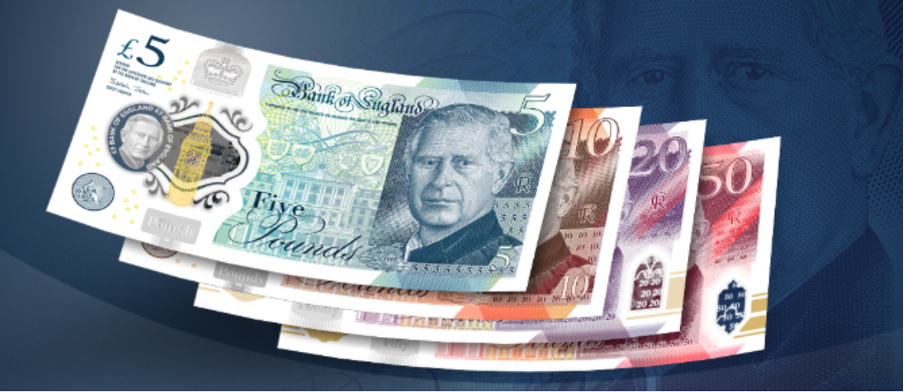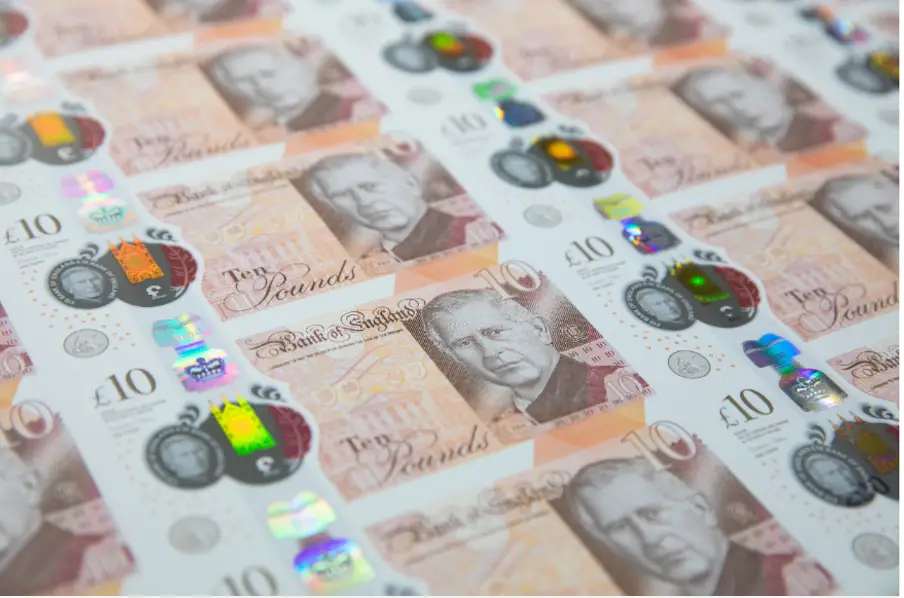Did you know that the Bank of England, the UK’s current central bank, was founded in 1694 Making it the eighth-oldest bank in the world? And did you know that it has a one-of-a-kind museum called the Bank of England Museum? Well, The Bank of England Museum has unveiled a new exhibition, “The Future of Money”, offering visitors a first glimpse at the newly designed banknotes featuring King Charles III. This exciting exhibition not only showcases the latest evolution of British currency but also delves into the fascinating world of money and its potential future. The exhibition opens on Wednesday the 28th of February at 10am, and will run until September 2025.

See History in the Making: The New King Charles Banknotes
The highlight of the exhibition is undoubtedly the display of the brand new £5, £10, £20, and £50 banknotes featuring King Charles III. These notes, which will enter circulation later this year, mark a significant moment in British history and offer a unique opportunity to see the evolution of British currency first hand. After all, the last time the money changed the face of the monarch was in the late 60s.
But the exhibition is much more than just a showcase of new banknotes. You can also explore:
- The future of money: The exhibition also explores the potential future of money, including the rise of cryptocurrencies, central bank digital currencies (CBDCs),and other innovative payment methods.
- Slavery & the Bank: This exhibition explores the history of transatlantic slavery through its connections with the Bank of England and the wider City of London: For over 300 years, the slave trade tore more than 12 million African people from their homes and families. The exhibition reflects on how the wealth created through transatlantic slavery shaped the development of Britain.
Other past exhibitions uncovered other insightful topics and curations including:
- The history of money: From ancient forms of currency like cowrie shells to the rise of digital payments, the exhibition takes visitors on a journey through the fascinating history of money.
- The impact of money on society: The exhibition examines the social, economic, and cultural impact of money, prompting visitors to think critically about the role of money in their lives.
Why You Should Visit the “The Future of Money” Exhibition
Whether you’re a history buff, a tech enthusiast, or simply curious about the future, the “The Future of Money” exhibition has something for everyone. Here are just a few reasons why you should visit:
- Be among the first to see the new King Charles banknotes: This is a unique opportunity to see the new notes before they enter circulation.
- Learn about the fascinating history of money: The exhibition offers a comprehensive overview of the history of money, from its earliest forms to the present day.
- Explore the future of money: The exhibition will challenge you to think about the future of money and how it might impact your life.
- It’s free! The Bank of England Museum is free to enter, making this exhibition a great value for money (pun intended!).
Additional Information
- The Bank of England Museum is open Monday to Friday from 10am to 5pm, and late until 8pm (last entry 7.30pm) every third Thursday of the month.
- The museum is closed on weekends and Bank Holidays.


